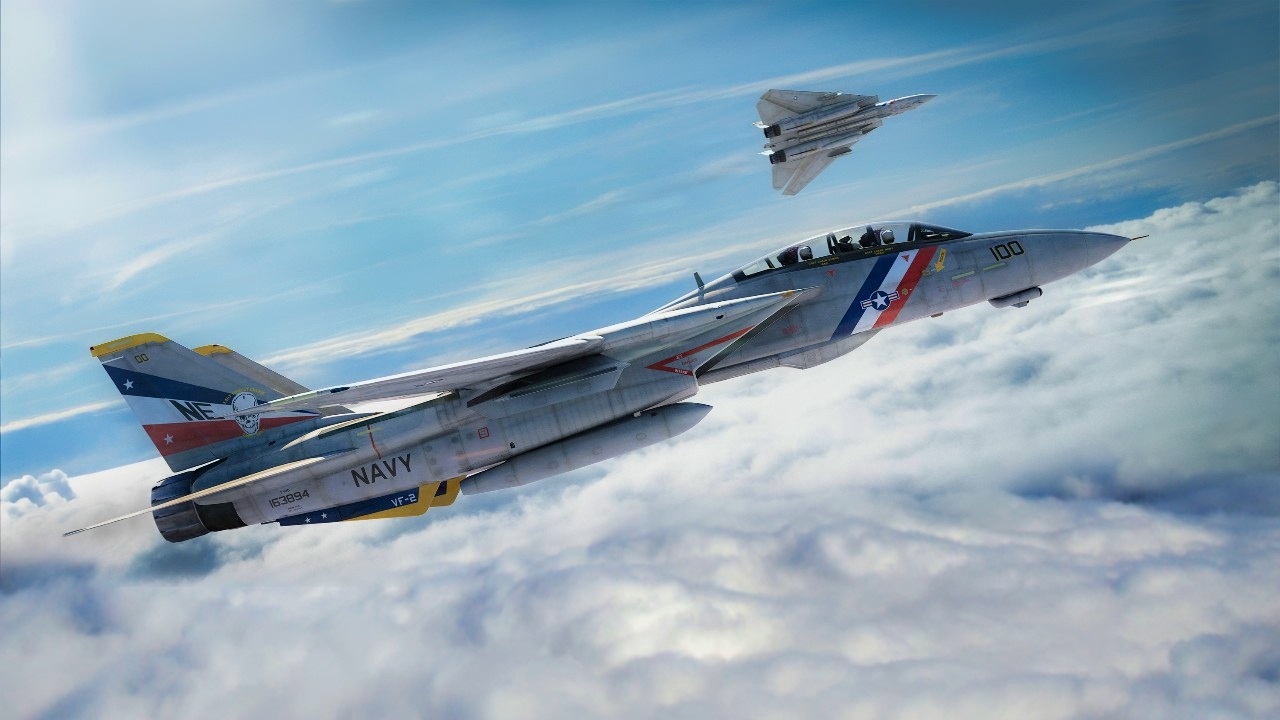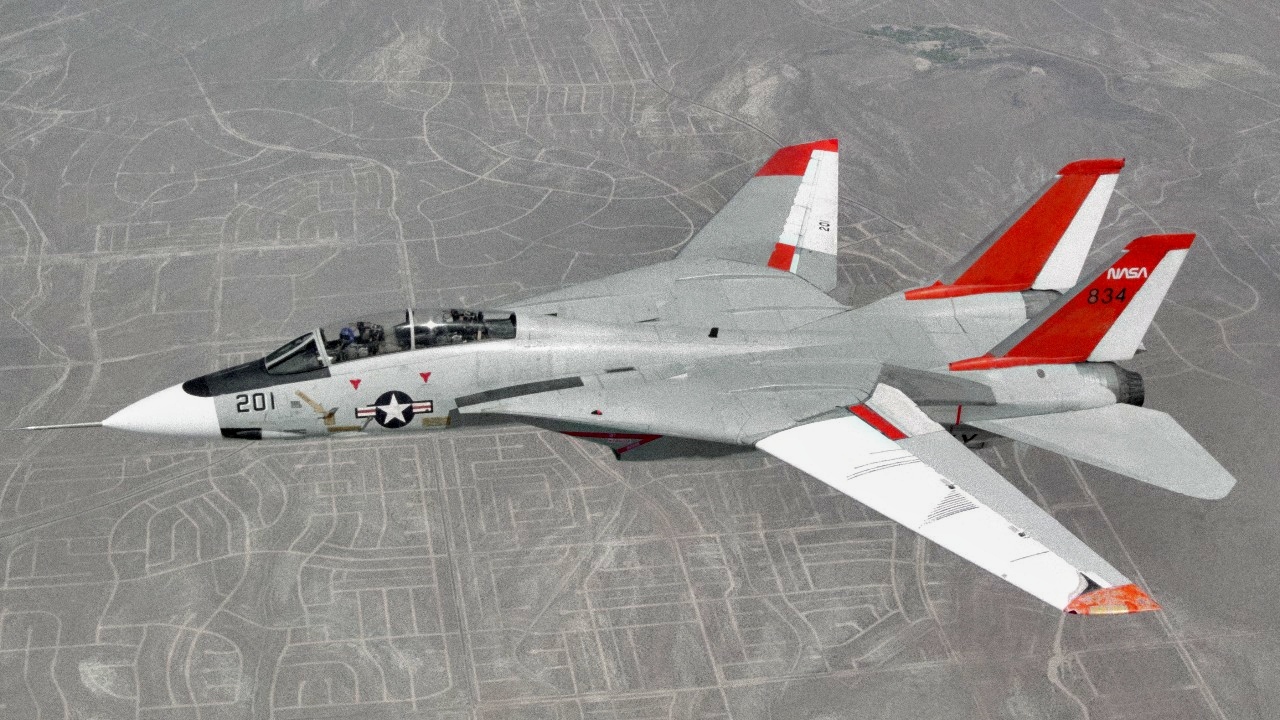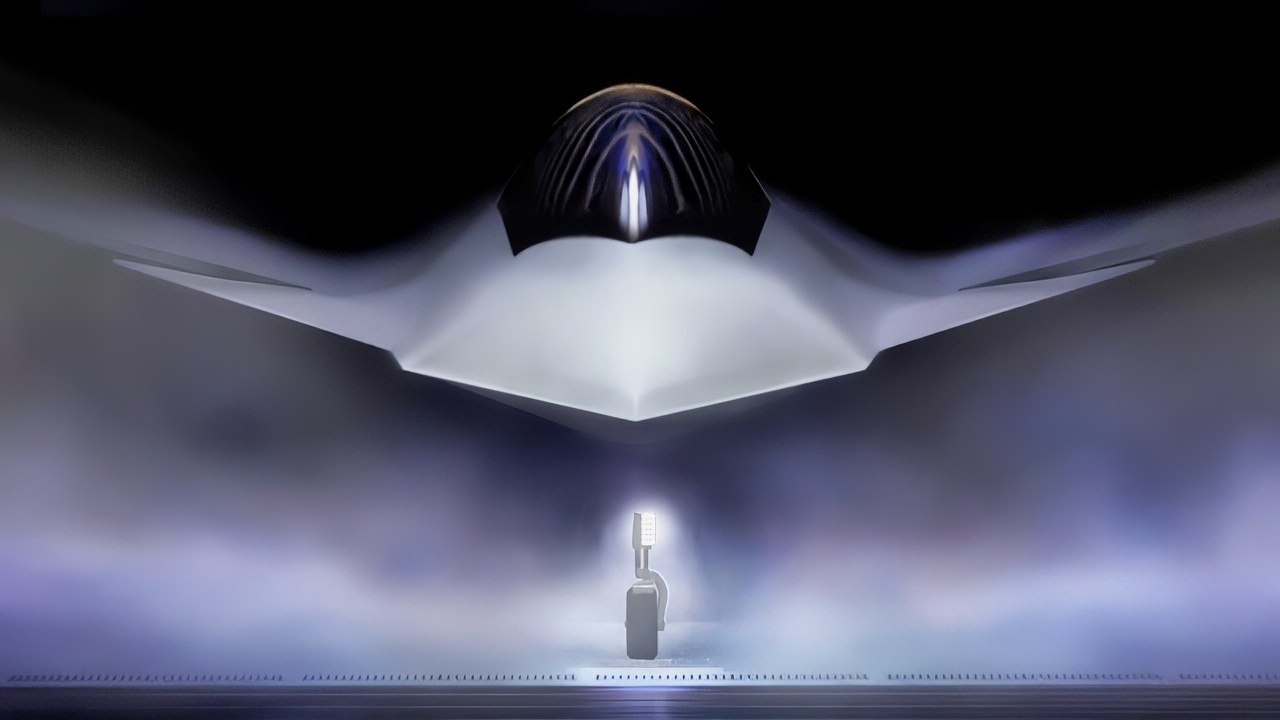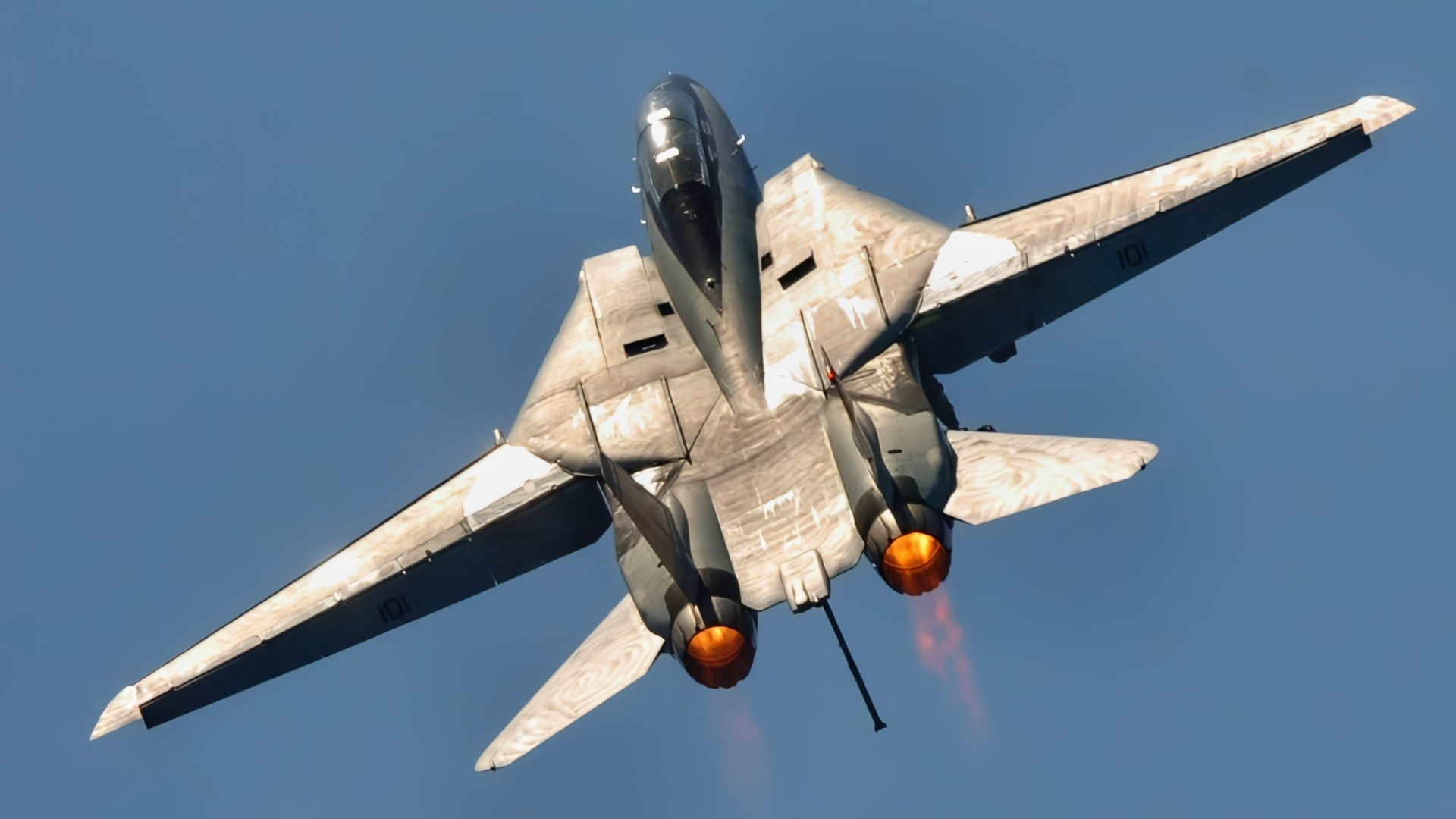Key Points and Summary – Fifty years after its 1974 debut, the F-14 Tomcat’s philosophy still defines air superiority.
-Its “unmatched” 1,841-mile range and, most importantly, its AN/AWG-9 radar paired with 100-mile AIM-54 Phoenix missiles, pioneered the “see first, shoot first” BVR doctrine.

F-14 Tomcat US Navy. Image Credit: Creative Commons.

NASA 834, an F-14 Navy Tomcat, seen here in flight, was used at Dryden in 1986 and 1987 in a program known as the Variable-Sweep Transition Flight Experiment (VSTFE). This program explored laminar flow on variable sweep aircraft at high subsonic speeds. An F-14 aircraft was chosen as the carrier vehicle for the VSTFE program primarily because of its variable-sweep capability, Mach and Reynolds number capability, availability, and favorable wing pressure distribution. The variable sweep outer-panels of the F-14 aircraft were modified with natural laminar flow gloves to provide not only smooth surfaces but also airfoils that can produce a wide range of pressure distributions for which transition location can be determined at various flight conditions and sweep angles. Glove I, seen here installed on the upper surface of the left wing, was a ”cleanup” or smoothing of the basic F-14 wing, while Glove II was designed to provide specific pressure distributions at Mach 0.7. Laminar flow research continued at Dryden with a research program on the NASA 848 F-16XL, a laminar flow experiment involving a wing-mounted panel with millions of tiny laser cut holes drawing off turbulent boundary layer air with a suction pump. April 11, 1986 NASA Photo

The F-14 Tomcat, famed for its role in “Top Gun” and its mission to protect U.S. carrier groups, underwent a significant transformation in its later years.
Dubbed the “Bombcat,” the F-14B variant was repurposed with advanced systems like the LANTIRN pod, enabling precision-guided munitions delivery from high altitudes.
-The jet’s variable-sweep wings offered unique adaptability, while its two-person (Pilot/RIO) crew provided “unmatched” situational awareness.
-This core philosophy of long-range, first-strike capability is now “in the DNA” of 6th-generation fighters like the F-47 NGAD.
Why the F-14 Tomcat Still Defines Air Superiority 50 Years Later
In September 1974, the F-14 Tomcat entered operational service with the United States Navy, ushering in a new era of carrier-based fighter capability.
The jet featured variable-sweep wings, a twin-engine layout, advanced radar, and a long-range missile system, making it an icon of the Cold War.
And while that was a long time ago now—some five decades—it hasn’t lost its significance.
The platform laid the foundation for how the U.S. Navy thinks about air dominance and fleet defense, and even today, the Tomcat’s core attributes still echo in modern aircraft design and deployment strategy.
In looking at these features and capabilities, it’s clear why the Tomcat is no relic, despite being retired in 2006.
Range and Endurance
The most enduring advantage of the F-14 was its ability to project power far from the carrier, giving fleet commanders a broad buffer zone.

F-14 Tomcat At Smithsonian. Image Credit: Creative Commons.
The aircraft had a range of up to 1,841 miles, which was completely unmatched at the time.
Its large internal fuel capacity supported two efficient turbofans. Its variable-sweep wings, meanwhile, could pivot and change their angle during flight, allowing the aircraft to adapt for slow speeds during takeoff and landing, and reduce drag for high-speed flight.
The mechanisms and technological innovations were complex and expensive for the time, but they made the F-14 the air-power legend it is today. It could loiter and intercept threats better than any other aircraft before they ever reached the fleet.
Firepower and Radar
The Tomcat also ushered in a new era of air defense strategy, using beyond-visual-range (BVR) engagement. The F-14’s Hughes AN/AWG-9 radar could track up to 24 airborne targets simultaneously and guide missiles against six of them at once.
Paired with the long-range AIM-54 Phoenix missiles, with ranges that surpassed 100 miles, the Tomcat could easily engage targets long before visual contact.
In today’s environment, threat ranges have extended even further, and so too have the ranges of missiles designed to intercept those threats. This model, pioneered by the Tomcat, is extremely relevant today – and that tomcat proved that air superiority demands more than just speed and agility. It was an early and fantastic example of how these platforms can be used to intercept threats from a long range.
Adaptability
The aforementioned variable-sweep wing, though heavy and complex, reflected a necessary design mindset: to build a fighter that can easily transit from low-speed carrier launch and landing to high-speed supersonic speeds – all with minimal compromise.

Iran F-14 Tomcat Fighter. Image Credit: Creative Commons.
That kind of adaptability is easily one of the most memorable features of this aircraft, and the design lives on today in the form of modular sensors and software-defined avionics.
Airframe design has moved on, too, making it easier for aircraft to handle dramatically different speeds without mechanisms that can fail.
In effect, the Tomcat’s dynamic geometry and features laid the groundwork for the kind of flexibility we see in today’s aircraft.
Survivability and Human Influence
The Tomcat was born in an era before true automation.
Long before it, in fact. The aircraft featured a two-seat cockpit, with one seat for the pilot and the other for a Radar Intercept Officer.
That design was intended to focus on survivability and human advantage—meaning that humans were the best resource a pilot and an aircraft could have in combat.
The presence of a radar intercept officer, who communicated with the crew, enabled the plane to engage in complex multi-target operations and benefited from situational awareness unmatched by any other platform.
Equally important was the overall culture that surrounded the Tomcat, including elite training at the United States Navy Fighter Weapons School (TOP GUN). The platform’s culture and passion drove performance to its limits.
From Tomcat to NGAD
Half a century after the F-14 first took flight, its legacy is about to reappear in a new form. The U.S. Air Force’s Next Generation Air Dominance (NGAD) fighter will not resemble the Tomcat in shape or mechanics.
Still, it certainly follows on from the iconic Tomcat’s purpose and philosophy. It’s in its DNA.
Like the Tomcat, NGAD is being designed around reach, adaptability, and first-strike advantage – but now, those traits are achieved in different ways.
Rather than through complex mechanics, NGAD will achieve many of the things the Tomcat did through stealth, sensor fusion technology, and advanced propulsion.

Shown is a graphical artist rendering of the Next Generation Air Dominance (NGAD) Platform. The rendering highlights the Air Force’s sixth generation fighter, the F-47. The NGAD Platform will bring lethal, next-generation technologies to ensure air superiority for the Joint Force in any conflict. (U.S. Air Force graphic)
And NGAD will operate as part of a manned-unmanned “family of systems” that will significantly extend situational awareness and improve engagement ranges well beyond today’s standards. Just as the Tomcat once did with the Phoenix missile.
Like the F-14, NGAD will also focus on ensuring that the United States can see first, shoot first, and survive.
The Tomcat may be a museum piece today, but its influence will be seen even in sixth-generation fighters.
About the Author:
Jack Buckby is a British author, counter-extremism researcher, and journalist based in New York. Reporting on the U.K., Europe, and the U.S., he works to analyze and understand left-wing and right-wing radicalization, and reports on Western governments’ approaches to the pressing issues of today. His books and research papers explore these themes and propose pragmatic solutions to our increasingly polarized society. His latest book is The Truth Teller: RFK Jr. and the Case for a Post-Partisan Presidency.
More Military
A ‘Small War’ Against Venezuela Is a Really Big Mistake
The Air Force’s Mach 2 F-15C/D Fighter Isn’t Going Anywhere
The United Kingdom Has a Message for the F-35 Stealth Fighter










